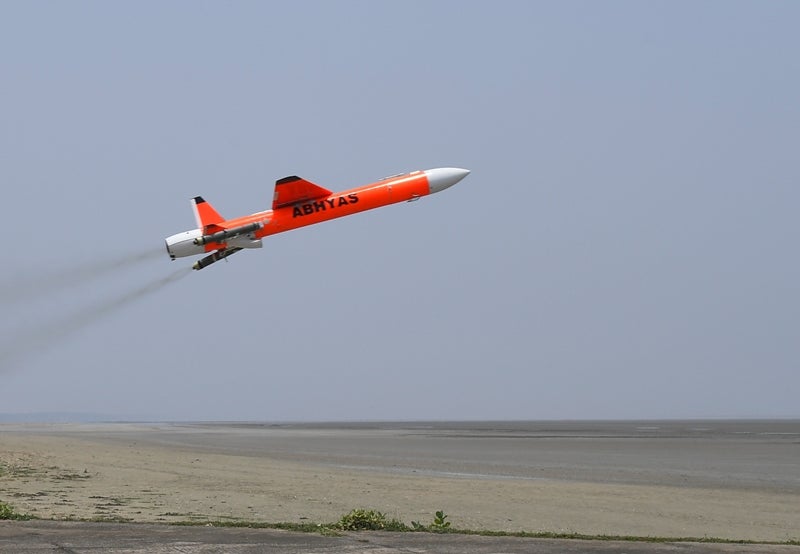
India’s Defence Research and Development Organisation (DRDO) has performed the flight test of a locally developed high-speed expendable aerial target (HEAT), known as Abhyas.
The flight test was conducted from the Interim Test Range, Chandipur, in the Indian state of Odisha.
Built by the Aeronautical Development Establishment (ADE), the HEAT drone is designed to offer a realistic threat scenario for the practice of weapon systems.
In a statement, the Indian Ministry of Defence (MoD) said: “The flight test was tracked by various radars and electro-optic systems and proved its performance in fully autonomous waypoint navigation mode.”
Abhyas is designed on an in-line small gas turbine engine and features a domestically developed microelectromechanical system (MEMS)-based navigation system that can be used to support navigation needs and guidance.
The MoD stated that the tests showcased the capability of the drone to meet the mission requirement for a cost-effective HEAT.
The HEAT system comprises a Luneburg lens in the nose cone that can enhance the target’s radar cross-section for weapons practice.
In addition, Abhyas is equipped with an acoustic miss distance indicator (AMDI) that allows users to find out how much a missile missed its target by.
The aerial target supports autonomous flying assisted by an autopilot. The system can also support live-fire weapons tests.
DRDO conducted the first experimental launch of the system in 2012, timesnownews.com reported. The report stated that the Indian Government allocated initial funding of Rs150bn ($2.13m) for the project.
It can be used to simulate aircraft for surface-to-air and air-to-air interception missile testing.



